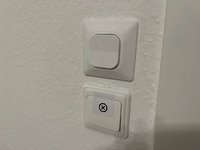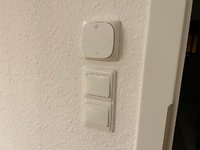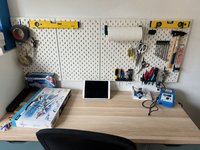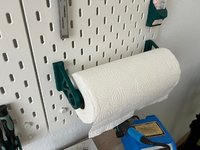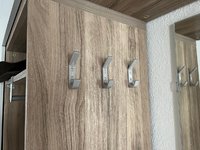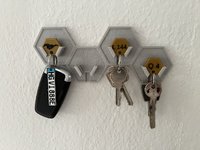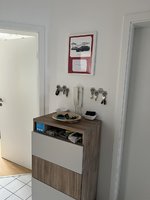- Joined
- Feb 17, 2006
- Messages
- 18,168
- Car(s)
- '12 MX-5 PRHT, '02 Freelander, '90 Disco 1 Bobtail
Crosspost.
Kind of, maybe, not really. Firstly it depends on the size, the absolute maximum diameter I can print is 15cm. @leviathan 's Prusa Mini is apparently up to 18cm. Sticking thick, flat parts together isn't very practical. Not in a way that ensures they won't just come apart, anyway.
Extrusion based prints aren't designed to be fully solid right from the start, the print would need to be at 100% infill to make it 'solid'. Even then it isn't completely solid because the infill printing isn't designed to overlap, nor is the software I use designed to allow it. CURA can do it, but I don't think that's compatible with my machine. This guy made a guide in 2018 if you're interested:
https://fenneclabs.net/index.php/2018/12/09/3d-printing-transparent-parts-using-fdm-fff-printer/
Assuming it was possible to achieve the right amount of overlap, it would need a lot of sanding to make it transparent. Then there's the issue of material properties. I exclusively use PLA and that softens relatively quickly, as I found out when I left my Smart in the sun in Italy and the shifter paddle extensions went all soft and warped. We had to flatten them out with pan and hair dryer. Anything warm in the bowl would cause it to soften, even a small amount can cause warping. PLA isn't food safe either.
A resin printer is more likely to get a good result but can only print small items and it's expensive. it's also very not food safe.
If I wanted a custom lid I'd personally be looking for someone to make one out of thin wood, cut to the correct size circle and routed to make it fit (tapered, with a lip for the top of the bowl or a channel for the rim). Then painted with food-safe paint.
TL : DR it's difficult, you probably wouldn't like the result and it might poison you.
Speaking of which, is it possible to 3D print with transparent material and would you make a lid for my KitchenAid bowl? They don’t sell one for the odd size I bought, so I’ve been meaning to ask for a while.
Kind of, maybe, not really. Firstly it depends on the size, the absolute maximum diameter I can print is 15cm. @leviathan 's Prusa Mini is apparently up to 18cm. Sticking thick, flat parts together isn't very practical. Not in a way that ensures they won't just come apart, anyway.
Extrusion based prints aren't designed to be fully solid right from the start, the print would need to be at 100% infill to make it 'solid'. Even then it isn't completely solid because the infill printing isn't designed to overlap, nor is the software I use designed to allow it. CURA can do it, but I don't think that's compatible with my machine. This guy made a guide in 2018 if you're interested:
https://fenneclabs.net/index.php/2018/12/09/3d-printing-transparent-parts-using-fdm-fff-printer/
Assuming it was possible to achieve the right amount of overlap, it would need a lot of sanding to make it transparent. Then there's the issue of material properties. I exclusively use PLA and that softens relatively quickly, as I found out when I left my Smart in the sun in Italy and the shifter paddle extensions went all soft and warped. We had to flatten them out with pan and hair dryer. Anything warm in the bowl would cause it to soften, even a small amount can cause warping. PLA isn't food safe either.
A resin printer is more likely to get a good result but can only print small items and it's expensive. it's also very not food safe.
If I wanted a custom lid I'd personally be looking for someone to make one out of thin wood, cut to the correct size circle and routed to make it fit (tapered, with a lip for the top of the bowl or a channel for the rim). Then painted with food-safe paint.
TL : DR it's difficult, you probably wouldn't like the result and it might poison you.




